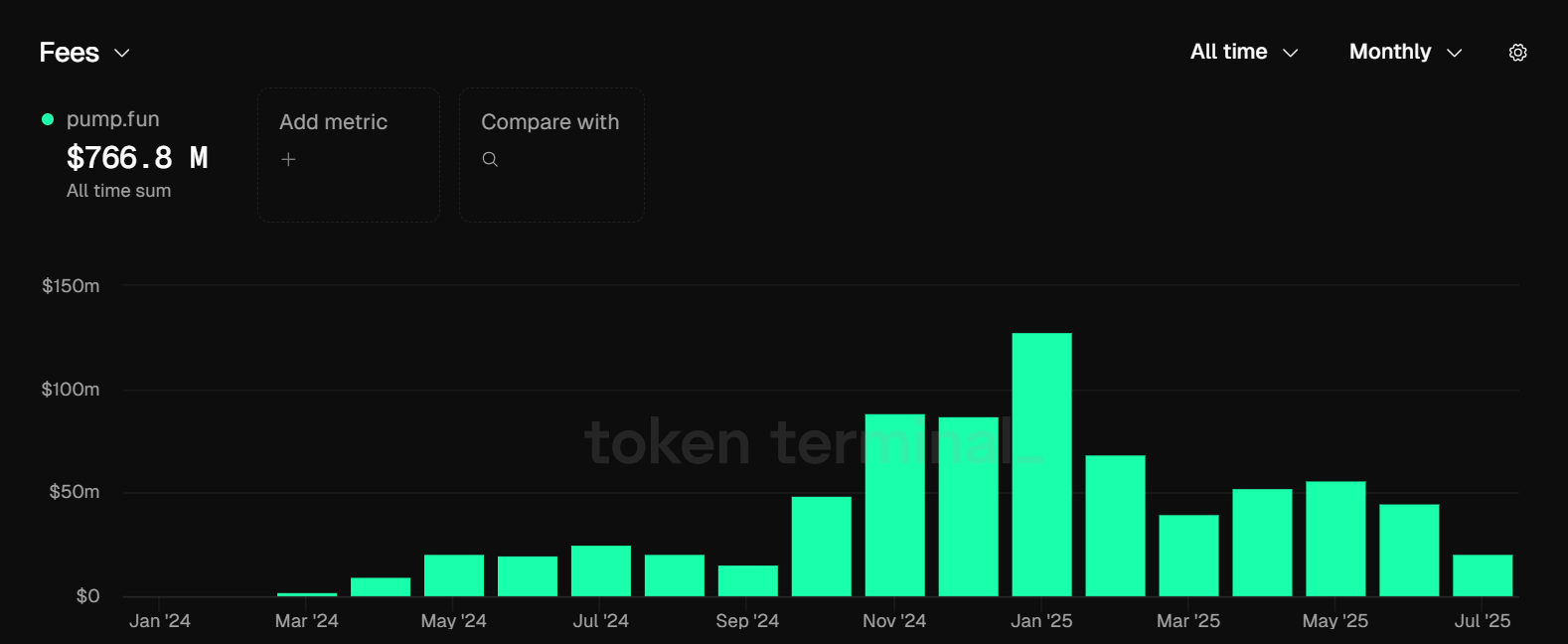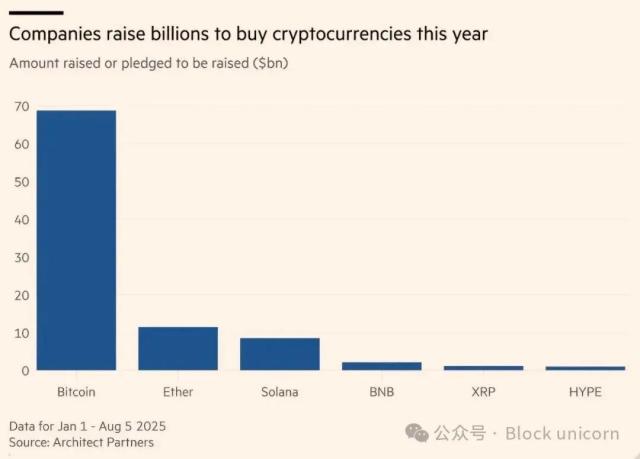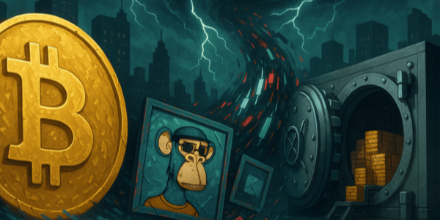In 2025, the crypto market is experiencing a new boom. Bitcoin has broken through the $120,000 mark, with Ethereum just a step away from its historical high. Driving this market trend is no longer just the enthusiasm of crypto natives, but the orderly entry of more traditional financial capital. Massive liquidity is pouring in, with BTC and ETH becoming natural reservoirs where funds settle and find it difficult to naturally overflow.
For projects lacking direct access to traditional capital channels, this is both a feast and a screening process. How to win the attention of capital under the siphoning effect of BTC and ETH has become a survival proposition they must directly face. In the past month, a growing consensus has been spreading among Altcoin projects: gaining market confidence through token buybacks and reserve treasury.
The logic of token buybacks is not complex: reduce circulating supply, increase scarcity, and thereby drive or stabilize prices. It is both a direct utilization of supply and demand relationships and a signal from project parties to the market—"we believe in ourselves". In terms of funding sources, buybacks may use protocol revenue, financing funds, or existing reserves, with execution methods including direct purchases in the open market, buybacks in on-chain liquidity pools, or even token burning.
However, buybacks are never a panacea. Transparency, execution intensity, and funding sources will determine the market's reaction. Some projects may trigger controversy or even price declines due to non-transparent buyback plans or failure to fulfill promises.
A month ago, we pointed out that projects with cash flow are more likely to survive. Now, although market sentiment seems to have shifted from low to euphoric, the narrative dilemma of Altcoins persists. How to break through the wave through buybacks tests the strategic vision of project parties.
Typical Cases: Multifaceted Landscape in the Buyback Trend
Here are several notable recent buyback cases, showcasing different strategies and effects of token buybacks.
Chainlink (LINK): Protocol Revenue Nurturing Token Ecosystem
On August 7, Chainlink announced the launch of Chainlink Reserve, directly converting enterprise integration and on-chain service fee revenues into LINK token reserves to support long-term network development. Co-founder Sergey Nazarov stated that the project currently generates hundreds of millions in revenue, mostly from large enterprises. The reserve account accumulated over a million dollars in LINK upon launch.
The core of this model is to introduce real external income into the token ecosystem, forming a closed loop, similar to traditional corporate "stock buybacks", but with on-chain assets as the target. As a decentralized oracle network, Chainlink is a key DeFi infrastructure, with protocols like Aave, Compound, and Uniswap relying on its price data to trigger liquidations and calculate collateral values. Collaborations with traditional financial giants like JPMorgan, SWIFT, and Fidelity further strengthen its bridge role between TradFi and blockchain. The 2025 White House digital asset report even highlighted its strategic value in stablecoin and tokenized asset domains.
The greatest significance of this buyback is not short-term price fluctuations, but the first direct binding of LINK tokens with protocol revenue—token holders finally have a quantifiable value acquisition path. Previously, LINK's market value mainly depended on the narrative of "infrastructure scarcity", now with an additional "cash flow feedback" logic chain.
[The rest of the translation follows the same professional and accurate approach]
A week later, BounceBit disclosed on X platform that it has repurchased 8.87 million BB tokens from the open market, valued at approximately $1.16 million, and plans to continue using the protocol's annual income of around $16 million for buybacks. If fully implemented, based on the current price ($0.118), the repurchase scale could reach 135 million BB tokens, approximately 20% of the total circulating supply.
Although the scale of repurchase funds is not large in absolute terms, it appears very aggressive in percentage (20% of circulation). However, the ultimate effect of the repurchase still depends on whether the crypto market's euphoric sentiment can be sustained and transmitted to the BounceBit project.
Story (IP): Misalignment between Financing Positive News and Price Reversal
On August 11, Nasdaq-listed Heritage Distilling announced the completion of a $220 million financing round, with lead investors including a16z crypto, Amber Group, Arrington Capital, and other well-known crypto investment institutions. They jointly launched a $360 million IP token reserve plan with the Story Foundation. Among this, Heritage will receive 52.4 million IP tokens with long-term lockup, and the Story Foundation will use $82 million to fully repurchase an equivalent amount of IP within 90 days.
From a capital structure perspective, this is a16z's first participation in a listed company's digital asset strategic allocation, and a rare case of a Nasdaq-listed company with the lowest market value introducing a crypto token reserve. For Story, an AI-driven decentralized content ecosystem, this should have been a narrative-level leap - with a large financing scale, strong institutional lineup, and clear reserve commitments.
However, the market reaction was unexpected. After the announcement, the IP token price dropped from $7.1 to around $5.5. There were rumors that the financing cost was leaked and significantly lower than the secondary market price, causing a collapse in confidence, but this has not been officially confirmed. This also reflects a core contradiction: if the buyback plan is interpreted by the market as "institutions entering at a low price", it may instead become a catalyst for selling pressure.
pump.fun (PUMP): Revenue-Driven Buyback and Transparency Crisis
As the former leading MEME coin launch platform, pump.fun issued its platform token PUMP on July 12 after being surpassed by LetsBONK.fun, attempting to rebuild its moat through fee discounts, staking rewards, and community incentives. However, PUMP lacks clear governance rights, staking returns, or fee-sharing mechanisms, and rapid whale wallet selling after the ICO has put pressure on its price.
Facing significant selling pressure, pump.fun launched a buyback plan totaling $30.53 million. The buyback funds come from platform trading fees (1% buy/sell fee), with 35% used for PUMP token buybacks.
The first round of buyback on July 16 was worth about $2.1 million. So far, the PUMP buyback address has accumulated PUMP tokens worth $6.68 million, of which about $5.72 million in tokens have been transferred to Squads Vault.
The issue lies in transparency. Previous market information suggested pump.fun would increase the PUMP token buyback ratio to 100% of daily income. After Dumpster DAO tracked this, they warned the community to cautiously observe on-chain data, as pump.fun currently only uses 1 day of 100% income for token buyback. Although pump.fun previously packaged 100% of income funds for token buyback, they did not fully execute it, raising doubts about their intentions. Moreover, these tokens have never been burned or transferred anywhere, and without any official communication or reliable buyback system, there's no reason to believe this will continue.
Despite a clear decline in pump.fun's current income, monthly revenue can still reach around $20 million. If calculated at the 35% buyback ratio, monthly buyback could reach $7 million. For a buyback model dependent on platform income, the core test is not the amount, but the stability and verifiability of execution. If transparency is lacking, even with abundant income, it will be difficult to truly boost investor confidence.

Lista DAO (LISTA): Hard Destruction and Economic Structure Optimization
On August 14, Lista DAO announced that the LIP-021 proposal was approved, which will one-time destroy 20% (200 million) LISTA tokens, and adjust the protocol income distribution mechanism. This reduces the maximum LISTA supply from 1 billion to 800 million, forming a direct positive signal in terms of scarcity logic.
Lista DAO focuses on providing decentralized financial services such as lending, staking, and liquidity mining, centered on its over-collateralized stablecoin lisUSD and native governance token LISTA.
Compared to other cases of "income-driven buyback" or "financing buyback", Lista's approach is a hard supply reduction. Additionally, the proposal cancels the previous mechanism of fixed freezing 40% of protocol income for token buybacks, instead flexibly allocating this portion to veLISTA holders (users who obtain voting rights by locking LISTA) and DAO operations and ecosystem development. This means LISTA holders will obtain more direct revenue rights, while the DAO gains more flexibility in fund usage.
This mechanism is more likely to form a positive price expectation in the short term, but its long-term effect still depends on whether lisUSD's market penetration and protocol income can continue to grow.
Bonk (BONK): Dual-Track Strategy and Trust Test
On July 24, LetsBONK announced that 1% of its total revenue will be used to repurchase top tokens within the BONK ecosystem, with funds from the team's marketing fund, to be executed weekly. Based on that day's data, LetsBONK generated about $1.5 million in fees in the past 24 hours, which would provide $15,000 for this round of buyback. If calculated according to this data, monthly buyback could reach $450,000.
LetsBONK.fun is a Solana-based MEME launch and trading platform, developed by the BONK community in collaboration with decentralized exchange Raydium, officially launched on April 25, 2025. After launch, the platform quickly rose, surpassing the then industry leader Pump.fun to become the largest MEME coin issuance platform on Solana in July 2025. On August 5, BONK posted on X that it had burned 30 billion BONK tokens through protocol fees from LetsBONK.fun, worth approximately $8 million.
However, the execution was accompanied by controversy. On July 25, the Bonk project tweeted that it had repurchased and burned 50 billion BONK tokens (worth about $18.47 million). But half an hour later, 51 billion BONK tokens were transferred from GalaxyDigital to Binance and Coinbase. After the news came out, BONK dropped by 10%.
On August 11, Nasdaq-listed Safety Shot announced a strategic alliance with Bonk founding contributors, launching a BONK treasury strategy. The company is reportedly set to receive BONK tokens worth $25 million, in exchange for issuing convertible preferred stock with a total value of $35 million.
For BONK, the current protocol is in a high-speed development period, and its substantial protocol income provides certain competitiveness. However, the dual-track mode of destruction and buyback can create scarcity expectations at the narrative level, but in an era where on-chain transactions can be monitored in real-time, any opacity in fund flow will quickly transform into a trust risk.
Summary: Buyback is a Tool, Not a Talisman
Whether driven by financing, income feedback, or one-time destruction, the market effect of buybacks is built on execution, transparency, and fund sustainability. For investors, the key is not seeing the word "buyback", but asking three questions: Where does the money come from? How long will it last? Does it truly reduce circulating supply? The answers to these three questions determine whether the buyback plan becomes a price support foundation or a short-term narrative. Only when the funding source is stable, the execution chain is transparent, and the supply is indeed contracted, can buyback become a long-term tool for crossing emotional cycles.






